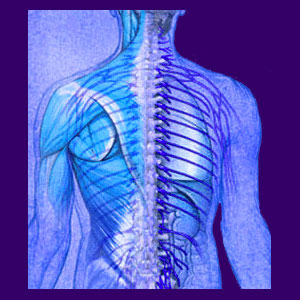
Spina bifida cystica is the most severe form of the various congenital bifida spinal abnormalities. Bifida cystica is also sometimes called myelomeningocele. Unlike other more benign forms, the cystica condition is always pathological and can produce dire health consequences.
In this spina bifida condition, the actual spinal cord protrudes through an opening in one or more vertebrae losing the protection of the backbone and being subjected to tremendous damage from its exposure. Unfortunately, even though this is the worst possible type of bifida, it is also the most commonly encountered. Many patients do not survive the disorder for long and those who do typically have far ranging and severe health consequences for as long as life endures.
This essay provides a detailed view of the causes and consequences of myelomeningocele. We will define the disorder and describe why its symptomology is one of the most dreaded among spinal diseases.
What is Myelomeningocele?
Cystica is a very severe form of spina bifida which can cause ultra severe consequences for most affected individuals. The condition is often fatal and when patients do survive it, they are always severely affected by its expressions.
Cystica condition describes an unprotected and most likely underdeveloped spinal cord which has protruded through an opening in the rear of one or more vertebral bones. The defect may or may not be sealed by the typical fluid filled thecal sac which surrounds the spinal cord.
This abnormality generally occurs in the lumbar or sacral spinal regions, although it might occur virtually anywhere in the spinal column. The higher up the defect occurs, the worse the effects generally are. Thoracic bifida cystica is worse than lumbar and cervical cystica has the greatest chance of being fatal.
Bifida Cystica Effects
Individuals affected by myelomeningocele most often suffer complete or incomplete paralysis from the level of the defect down. Spinal cord injury brought about by this severe form of bifida is permanent and can even be life threatening.
There is a wide range of common cystica complications which affect neurological function and anatomical development, including loss of bowel or bladder control, sexual dysfunction, physical deformities, brain deformities (especially Arnold Chiari II malformation), increased susceptibility to spinal infections and many others.
The actual physical defect caused by cystica is most commonly corrected surgically when the infant is born, in order to protect the functionality which remains in the spinal cord and insulate the child against further risk of spinal cord injury.
Extreme Spina Bifida Cystica
Cystica is a very extreme version of spina bifida. Unfortunately for affected patients, cystica is likely to reduce both the quality and duration of life and might even be the direct cause of a very premature death. Children born in undeveloped countries have little hope of surviving with severe cystica conditions, since constant medical care is a necessity.
Luckily, scientists have identified several effective methods of preventing spina bifida in developing fetuses. It is vital that all pregnant women learn the facts about spina bifida and do everything possible to minimize the chance of having this disorder affect their precious new child.




